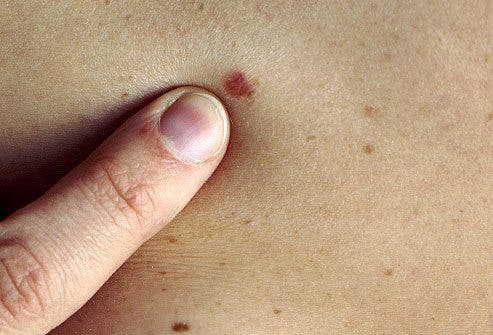
A team from Stanford trained an AI to spot telltale signs of cancer and the machine proved to be just as effective at spotting melanoma as a human oncologist.
A trained eye that never gets tired and always devotes its full attention, pixel by pixel
Skin cancer is one of the most common types of cancer with 5.4 million new cases diagnosed each year in the United States alone. Luckily, it is also one of the easiest to treat as patients can expect a 97 percent five-year survival rate, provided you spot it early. If the diagnose comes after the disease is in its later stage, the survival rate plummets to 14 percent.
This is why having a machine able to diagnose skin cancer is so exciting. People worried they might have cancer could simply upload pics of suspicious body parts like moles or rashes through an app, then the AI would quickly tell them if there’s something to worry about. The patients can then seek professional counseling from a human doctor that can have the final world. This pre-diagnosing stage is very important and a lot of people miss an appointment with a doctor because it’s a hassle or they’re scared. Just snapping a pic and uploading it literally takes 10 seconds, though.
“We realized it was feasible, not just to do something well, but as well as a human dermatologist,” said Sebastian Thrun, an adjunct professor in the Stanford Artificial Intelligence Laboratory. “That’s when our thinking changed. That’s when we said, ‘Look, this is not just a class project for students, this is an opportunity to do something great for humanity.’”
Stanford researchers based their AI an existing deep learning algorithm, known as a neural network, from Google used for image classification. We previously wrote in great detail how this neural network learns, responds, and classifies information akin to neural networks in the human brain.
Google’s neural network was primed to tell objects from photos apart, a dog from a cat for instance. Thrun and colleagues, however, needed to a machine that could know a malignant carcinoma from a benign seborrheic keratosis.
For this particular purpose, the AI was trained with 130,000 images of moles, rashes, and lesions which represented over 2,000 different diseases. Some of these features were benign while others belonged to people diagnosed with skin cancer. When the AI was deemed ready, it was tested against 21 human dermatologists. Tests suggest the machine, which scanned each picture pixel by pixel, performed on par with humans, being at least 91 percent as accurate. For instance, the dermatologists could identify 95 percent of the malignant lesions and 76 percent of the benign ones. The AI was correct 96 percent of the time for malignant moles and 90 percent of the time for harmless lesions, as reported in Nature.
“There’s no huge dataset of skin cancer that we can just train our algorithms on, so we had to make our own,” Brett Kuprel, a co-author of the paper said in a Stanford University blog poston the topic. “We gathered images from the internet and worked with the medical school to create a nice taxonomy out of data that was very messy — the labels alone were in several languages, including German, Arabic and Latin.”
The researchers stress that their machine is by no means meant to replace dermatologists. Rather, the algorithm is meant to assist diagnosis by making the process far more easier for patients. It never hurts to have a second opinion either and a machine that’s never tired or moody could mean a lot in this respect.
“Advances in computer-aided classification of benign versus malignant skin lesions could greatly assist dermatologists in improved diagnosis for challenging lesions and provide better management options for patients,” said Susan Swetter, professor of dermatology and director of the Pigmented Lesion and Melanoma Program at the Stanford Cancer Institute, and co-author of the paper. “However, rigorous prospective validation of the algorithm is necessary before it can be implemented in clinical practice, by practitioners and patients alike.”






